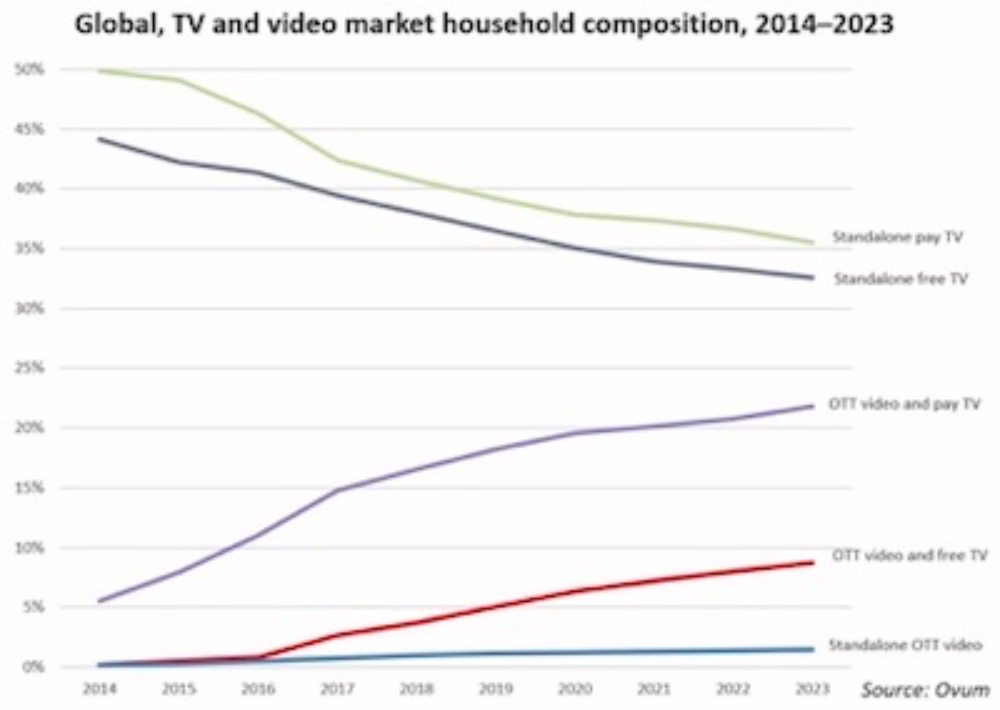The slow death of traditional TV has long been predicted after the surge in digital rivals, but research from Ovum — as noted by RapidTV News — suggests that such services can fine tune to survive the onslaught.
Ovum says that, in 2014, some 94% of household video choices, worldwide, were exclusively based on traditional TV such as a free TV service, a pay-TV service, or both. That figure has now dropped below 80% and the research group forecasts that these standalone traditional TV services will account for just 68% of household video choices by 2023. In the world’s most advanced multi-subscription TV market, the US, that number has already reached 42% and is set to fall further, to 39%, in 2023.

“Our research has highlighted the extent of the challenge facing traditional TV players worldwide, as their core proposition is increasingly diluted by the growing demand for additional viewing options,” said research author Adam Thomas, Ovum’s lead analyst for global TV markets. “Limited action, like the rollout of multiscreen authentication and flexible package options, can certainly help pay-TV to minimise the rate of decline. But more radical measures are needed to prosper: the business model needs to be restructured, so that pay-TV becomes just one of many options for audiences to purchase.”
Added Ed Barton, chief analyst of the entertainment practice at Ovum: “operators and broadcasters need to position pay-TV alongside a range of OTT, mobile and multiplatform services which finesse the packaging, bundling and service tiering according to the mores of local audiences. This will facilitate effective segmentation of audiences with tiered services that can adapt to local market conditions. OTT options also open up new markets for the service providers by enabling rapid, low cost expansion beyond traditional geographic footprints determined by cable or satellite network coverage.”
OTT (“over the top”) refers to devices that go “over” a cable box to give the user access to TV content. In OTT channels, content is delivered via an Internet connection rather than through a traditional cable/broadcast provider. Examples include Netflix, Amazon Prime, Hulu, and the upcoming Apple TV+ service that’s coming this fall.
